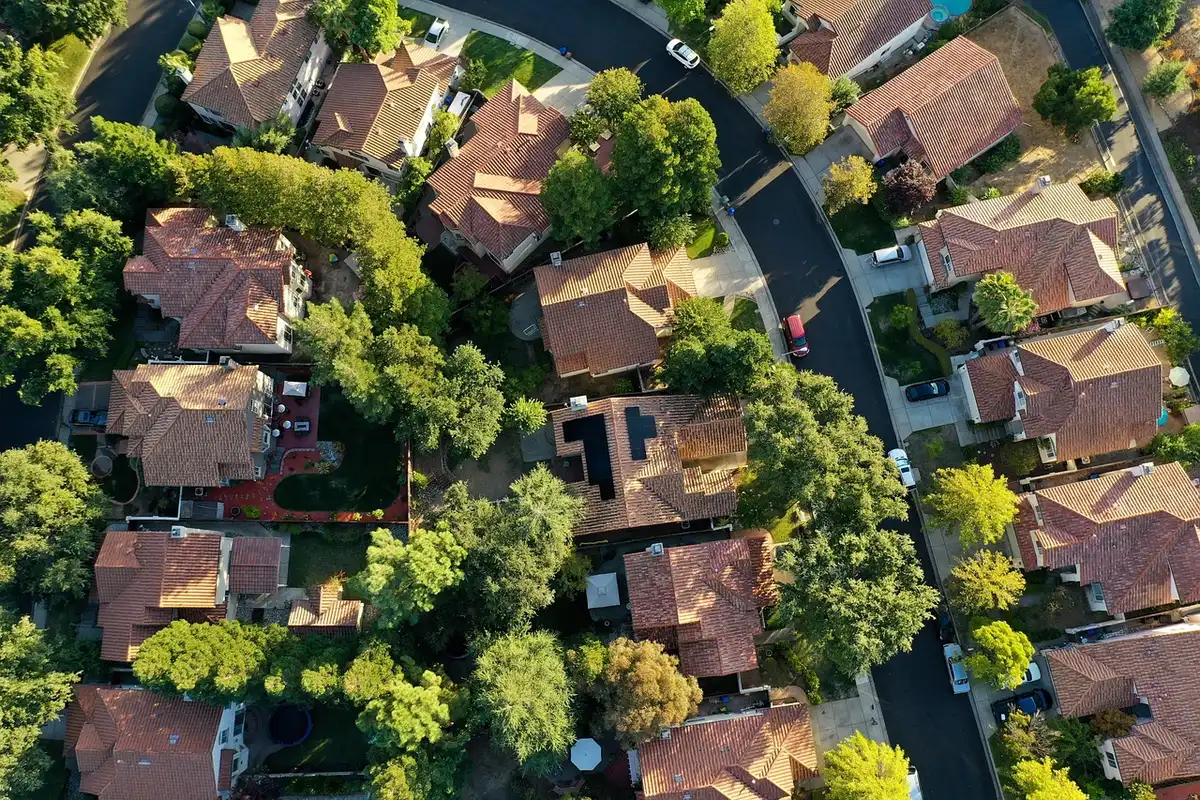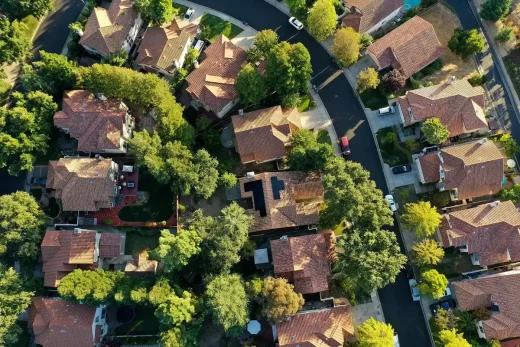The ultimate house buyer’s guide to sustainable architecture, Buying a new property, Home buy advice
The Ultimate House Buyer’s Guide to Sustainable Architecture
5 March 2025
You’re ready to buy a home that’s both stylish and eco-friendly, but you’re not certain where to start. Sustainable architecture addresses your concerns, helping you reduce costs, preserve resources, and enjoy a healthier lifestyle.
You’re overwhelmed by conflicting advice on energy-saving materials, solar panels, and green certifications. We’ll simplify it so you can focus on what matters: a home that offers lasting comfort, lower bills, and minimal environmental impact.
From choosing materials to boosting resale value, we’ll guide you at every turn. “We’ve simplified your home-buying journey,” says housebuyerstexas.com. Now, let’s dive in and make your sustainable vision a reality.
Passive vs. Active Design
You often hear about passive and active methods for controlling energy usage. Both approaches strive to keep your home efficient while minimizing overall resource demands.
Passive design leverages natural elements like sunlight or airflow, whereas active systems include technologies consuming electricity. Both can coexist harmoniously to achieve optimal energy performance.
- Read more about comparing these concepts by visiting this in-depth guide for real-world applications.
- Focus on orientation to capture maximum natural light for passive heating, lowering reliance on mechanical heating.
- Utilize advanced tech like solar panels and heat pumps for active energy generation and improved consumption control.
Balancing these two strategies ultimately boosts comfort, lowers utility bills, and greatly promotes sustainability. You shape a future-proof dwelling by blending passive with active methods.
Renewable Energy for Homes
Exploring renewable energy involves tapping sustainable power like solar, wind, or biomass. You reduce carbon footprints while preserving convenience in your home’s daily energy needs.
Solar Solutions
Sizing solar panels depends on your typical usage and climate factors. Position them strategically on rooftops to capture sunlight and substantially lower overall electricity bills.
Wind and Biomass
Wind turbines can supplement power for rural homes, while biomass sources include organic waste or wood pellets. Combining these options elevates your home’s energy independence.
Off-Site Partnerships
Consider community solar farms or green power programs when on-site options aren’t practical. Cooperative energy models broaden access to renewables and foster community-level environmental responsibility.
Eco-Friendly Construction Materials
You want your strong building materials to promote sustainability without sacrificing durability. By opting for green products, you minimize pollution and support Earth-conscious supply chains.
Before selecting lumber or steel, compare carbon footprints and performance. A choice ensures your project aligns with sustainable goals and stands the test of time.
- Choose reclaimed timber to reduce deforestation and lend character to floors, beams, or accent walls.
- Opt for bamboo given its rapid growth rate and natural resilience against moisture or pests.
- Embrace recycled metal for structural supports, lowering raw material extraction and associated emissions.
Combining innovative materials also sparks unique aesthetics. Your eco-conscious decisions immensely help preserve natural resources, truly improving global well-being one structural element at a time.
Landscaping for Sustainability
Designing outdoor spaces with conservation in mind supports wildlife and healthy ecosystems. By choosing climate-appropriate plants, you minimize watering demands and reduce chemical-laden maintenance tasks.
Native Planting
Native species are well-adapted to local soil types and rainfall patterns. You’ll discourage invasive pests, plus reduce fertilizer or pesticide usage in your landscaping routine.
Rainwater Management
Swales or rain gardens capture runoff, directing water into planting beds before it escapes. This approach conserves resources and protects local waterways from harmful pollution.
Habitat Preservation
Incorporating wildlife-friendly components, like bird feeders or butterfly gardens, truly fosters biodiversity around your property. Natural corridors link habitats and help living creatures thrive sustainably.
Indoor Air Quality Solutions
Maintaining pristine indoor air truly matters for your health and comfort. You can limit pollutants while optimizing ventilation, ensuring your home remains fresh and contaminant-free.
Design strategies focus on removing contaminant sources and boosting airflow. These tactics often involve thoughtful material choices, humidity control, and ongoing monitoring throughout the home.
- Ventilate properly by using exhaust fans, open windows, and balanced HVAC systems for consistent air exchange.
- Pick low-VOC finishes to reduce harmful chemical off-gassing from paints, adhesives, or furnishings.
- Incorporate green elements such as houseplants or biophilic design, helping filter indoor pollutants naturally.
Prioritizing better indoor air pays off ultimately in wellness and performance. The environment you breathe in daily should seriously promote vitality, not aggravate health concerns.
Water Conservation Strategies
Reducing water usage preserves an essential natural resource and lowers utility bills. By installing practical systems, you ensure everyday consumption aligns better with environmental priorities.
Rainwater Harvesting
Collecting precipitation using barrels or cisterns keeps landscaping lush without relying on treated water. This method also eases pressure on community supplies during drought periods.
Greywater Systems
Diversion of sink or shower drainage into toilets or irrigation ensures water sees multiple uses. Filtering greywater reduces overall demand, making every drop more productive.
Smart Fixtures
Low-flow faucets and dual-flush toilets deliver required function with less waste. Incorporating sensors and automatic shutoff mechanisms curbs excess usage, translating into lasting environmental benefits.
Energy Efficiency and Savings
You want a household that optimizes energy usage, saving money over time. Efficiency enhancements exist for new constructions and retrofits, tailoring improvements to specific goals.
Insulation Upgrades
High-quality insulation locks in conditioned air by sealing gaps in walls or attics. Enhanced thermal performance cuts energy loss and strongly fosters year-round indoor comfort.
Efficient Appliances
Updated appliances draw less power while offering improved capabilities. Seek models bearing efficiency certifications and consider devices like smart thermostats to fine-tune consumption patterns automatically.
Mindful Habits
Simple actions, such as unplugging electronics or adjusting window blinds, add up significantly overall. Embracing daily energy-awareness multiplies savings and reduces your home’s ecological impact.
Eco-Friendly Interior Décor Ideas
Your home’s interiors can look stylish while prioritizing sustainability. By combining low-impact materials and conscious designs, you nurture healthier living spaces that reduce carbon emissions.
Before selecting furnishings or paints, consider their manufacturing processes and toxicological impacts. Thoughtful décor choices influence overall indoor quality, from air purity to occupant wellbeing.
- Adopt reclaimed furniture that reduces waste and preserves unique design character.
- Opt for natural textiles like organic cotton or hemp to eliminate harmful chemicals in upholstery.
- Use non-toxic finishes when decorating walls or floors to ensure minimal off-gassing.
Authentic, earth-friendly décor personalizes your space with fewer pollutants. Small, thoughtful steps create lasting benefits, reflecting your values throughout each room’s aesthetics and overall ambiance.
Building a Sustainable Outdoor Space
Creating an eco-friendly outdoor oasis merges natural beauty with functional design. You truly influence biodiversity and reduce resource demands while enjoying extended living areas year-round.
Low-Impact Hardscapes
Choosing permeable pavers or gravel reduces stormwater runoff, letting water soak into the ground naturally. This approach nurtures healthier soil conditions and lowers flood-related worries.
Eco-Conscious Lighting
Install solar-powered or low-voltage fixtures for pathways and seating areas, minimizing electricity costs. Strategic placement also enhances ambiance without disrupting nocturnal wildlife around your yard.
Extended Green Living
Blend garden beds with entertaining zones, creating synergy between nature and daily life. Incorporate edible landscapes or vertical planters, generating fresh produce while maximizing space.
Green Future Unlocked
You prioritize efficient design, reuse natural resources, and safeguard indoor air. By adopting these green choices, you boost property value and wellbeing. Consult local house buyers to ensure a seamless transition into significantly sustainable living and lower environmental impact.
Comments on this guide to The Ultimate House Buyer’s Guide to Sustainable Architecture article are welcome.
Buying a Home
Buying Home Posts
HMO Management London property investment

Benefits of building over buying your first home
Future of house buying advice from leading experts
+++
Building Articles
Residential Architecture – selection:
Comments / photos for the The Ultimate House Buyer’s Guide to Sustainable Architecture page welcome.






